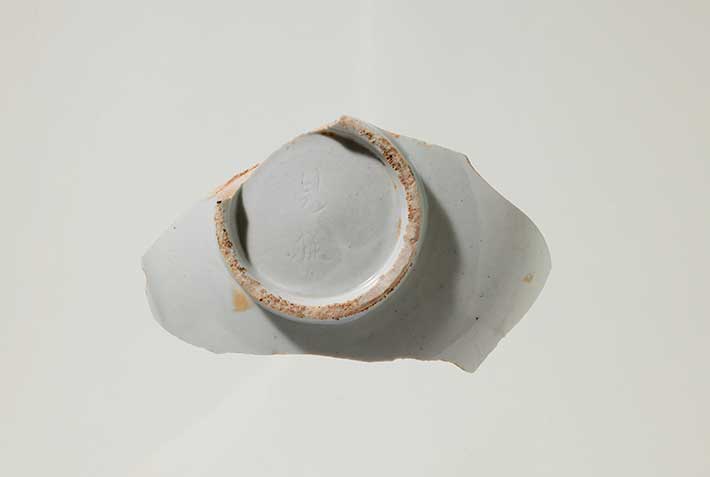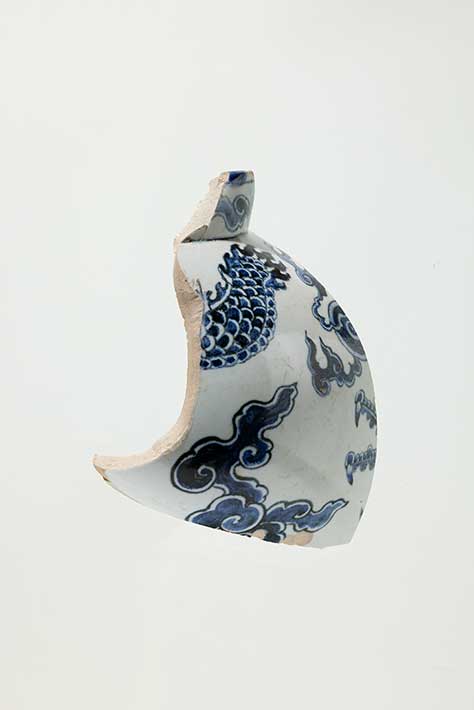Sub-theme1
- Joseon Dynasty, 15th-16th century
- Gongju National Museum (kou 51989·51976)
An excavation conducted in 1992 uncovered plain white porcelain, blue-and-white porcelain, and celadon. Among the white porcelain finds were large vessels made from refined clay and fired using saggars, many of which were inscribed on the base with characters such as cheon (天, heaven), ji (地, earth), hyeon (玄, black/mystery), and hwang (黃, yellow). Of particular note is a shard of white porcelain bearing the inscription gyeonyang (見樣), meaning “sample”-a rare and valuable example confirming the use of standardized reference models in the production of official court ceramics. In addition, fragments of a blue-and-white porcelain jar decorated with a dragon motif reflect the prestige and technical sophistication of production at the government kilns (gwanyo).

